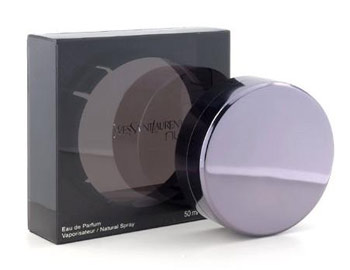It is
hard to write about scent.
Someone--Laurie Anderson, definitely, though I think she was quoting Frank Zappa--said, "Writing about music is like dancing about architecture", and that goes for fragrance, too. We don't have a big, clear vocabulary to talk about scent, and so we end up comparing a scent to other things--other scents, usually, but also colours and music and shapes and any other metaphorical thing that we think will get our point across. But it's hard to do in a way that seems concrete, and it's really hard to do over and over again without feeling as if you're repeating yourself.
It's so hard to do that I was thinking of discontinuing this blog: I have another one, and a job, and hobbies, and a life. But then I got a comment (
read it here) and I thought, well, at least a couple of people read this and seem to like it, so that makes it worth doing. And I've always thought that something worth doing was worth doing right, so I've resolved to write at least twice a week, maybe three, until I get hit by a bus or run out of scents, whichever comes first.
+

Some people turn up their noses at drugstore scents. I can't imagine why. Just as books from the worst to the best are made from the same alphabet and paper, commercial fragrances are all made with the same basic set of ingredients: what differentiates them one from another isn't the packaging or the marketing, but the skill with which those ingredients are compounded. Extremely high-end scents, of course, are more likely to use expensive and rare ingredients, but the fact is that most of what goes into a bottle of fragrance isn't that costly: even the best rose oil in the world wouldn't account for more than a fifty cents or a dollar in the tiny quantities in which it appears in Givenchy's Very Irresistible or Serge Lutens' Sa Majeste La Rose. (Most of the cost of a scent is in that packaging and marketing, plus the various markups that make profit possible.)
Tabu by Dana is just about the perfect example of this. It's very cheap: I have a half-ounce bottle that cost less than six dollars--Canadian dollars. And yet it's wonderful--striking, bold without being overbearing, absolutely perfectly balanced. If someone gave you a spritz from an unmarked bottle and told you it was the new thing from some Italian or French design house, you might not like it (it takes a certain kind of person to wear it), but you probably wouldn't think of it as a drugstore scent, either, because it's
really good.
Tabu is an oriental scent, make no mistake. There are flowers in there: a splat of orange blossom, a dab of rose and jasmine. They don't stand a chance against the onslaught of the oriental base notes, though, allied with potent carnation (my
most beloved of all flowers). Almost from the beginning, those powerhouse oriental notes come flying at you: civet, sandalwood, ambergris, benzoin, and most of all patchouli, lots of it, just dirty enough to put impure thoughts in your head. Of course it's sexual: oriental scents are meant to be carnal, but this one acts as if it invented indecency.
The more you smell Tabu, the more you realize that it was not only the inspiration but the template for
YSL's Opium, which followed it over fifty years later. Opium is beyond a doubt more complex and, truth be told, more interesting than Tabu, but it's still a devoted homage. Tabu is the original, and the fact that you can have it for just a few dollars makes it more, not less, appealing, to my mind. By the time it's breathing its last (for an eau de cologne it's startlingly long-lived), an animalic whisper of musk and benzoin, you won't remember how much you paid anyway.








